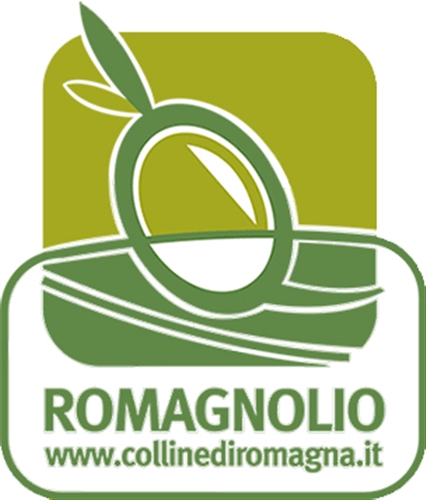COLLINE DI ROMAGNA DOP

The chemical and organoleptic characteristics of this oil come from a combination of several factors such as the varieties of olive trees, the characteristics of the soils, climate and farming practices, which provide a particular care in the growing and manual harvesting of olives from plants.
The characteristics of the soils and the varieties of olives influence the aroma and taste of the oil that has a very low acidity and a very delicate and fruity taste. It is an oil not overly structured with intermediate characteristics between the Ligurian (delicate) and the Tuscan or Puglia (more decided and stronger). It is usually yellow in color with green reflections very intense.
In the kitchen can be used as dressings for rich salad and added raw in soups of chickpeas and beans, but especially as condiment in important and complex dishes of local gastronomy. It is also particularly suitable for mayonnaise, for velvet, béchamel, potatoes puree, boiled fish, seafood salads, white meats, vegetables, for fine pastries and cookies, baking cakes and for frying fruit, pastries, omlette.
The collection is made almost entirely by hand; commercialization is still left to individual producers who also sell their products in bulk directly to consumers. Some large companies, however, have begun in recent years to make their own product with corporate brands, to enhance it and make a higher income.
Historical Notes
The cultivation of olive trees dates back more than 3000 years ago. It is supposed to come by today's Syria. While the use of olive oil in the kitchen is more recent, can be traced back to the 1500s in Romagna, age Villanoviana, the Middle Ages and beyond, and to the beginning of the '900, there are numerous archival sources, ecclesiastical and notarial evidence that the presence of the olive in the territory, and the importance of olive oil in the rural economy of Romagna.
Production Regulations
Area of ??production: includes all the territory of the municipalities of Coriano, Gemmano, Mondaino, Montecolombo, Montefiore Conca, Montegridolfo, Montescudo, Morciano di Romagna, Poggio Berni, Saludecio, San Giovanni in Marignano, San Clemente, Torriana, Verrucchio and in part Misano Adriatico, Riccione, Rimini, Santarcangelo di Romagna, in the province of Rimini; Borghi, Castrocaro Terme e Terra del Sole, Civitella di Romagna, Dovadola, Meldola, Mercato Saraceno, Montiano, Predappio, Rocca San Casciano, Roncofreddo and Sogliano al Rubicone and in part Bertinoro, Cesena, Forlì, Forlimpopoli, Longiano, Savignano sul Rubicone, in the province of Forlì-Cesena.
The area is characterized by medium-textured soils, sometimes tending to clay and in some cases with good presence and content of the sand fraction of limestone are generally high.
The olive tree located in these areas of good pedological for its development and is able to grow and produce well as the draining of the water is ensured by the hilly land and careful cultivation practices of farmers.
Variety of olives: frantoio e/o correggiole min. 60%; leccino, massimo 40%: dondolino, moraiolo. selvatico, rossina e capolga, up to 15%.
Features of cultivation: environmental conditions and cultivation of olive trees must be traditional ones and characteristics of the area and, in any case, such as to confer the specific qualitative characteristics to the oil.
The planting density, types of cultivation and pruning systems should be those traditionally used in the area. Are permitted new forms of pruning and breeding provided they do not alter the characteristics of olive oil and extra virgin olive oil produced.
The maximum production of olives per hectare may not exceed 71 always with a maximum limit of 60 kg per plant. The olive harvest must be made between October 20 and December 15 of each year and can be done by hand or by mechanical means. It is not allowed the collection of olives that have fallen to the ground for parasites.
Mode of oil extraction: the olives must be subjected to defoliation and wash with clean water, every other treatment is forbidden.
The operations of oil extraction must be made within two days after collection.
For oil extraction, are allowed only mechanical and physical processes capable of producing oils which as closely as possible the characteristics of the fruit and at the facilities of milling (mills) in the area.
The maximum yield of olives in oil may not exceed 18%.
The extraction of oil and packaging must only be carried out in the production area.
Consumer Features:
color from green to golden yellow;
odor: fruity olive medium or sometimes intense, with any feelings of grass or leaf;
flavor: fruity olive oil with slight bitterness and / or medium spicy, together with any hints of almond, artichoke and tomato;
maximum total acidity expressed as oleic acid, by weight, not exceeding 0.5 grams per 100 grams of oil;
panel test score> = 7;
It is mandatory to indicate on the label the year of harvest of the olives.